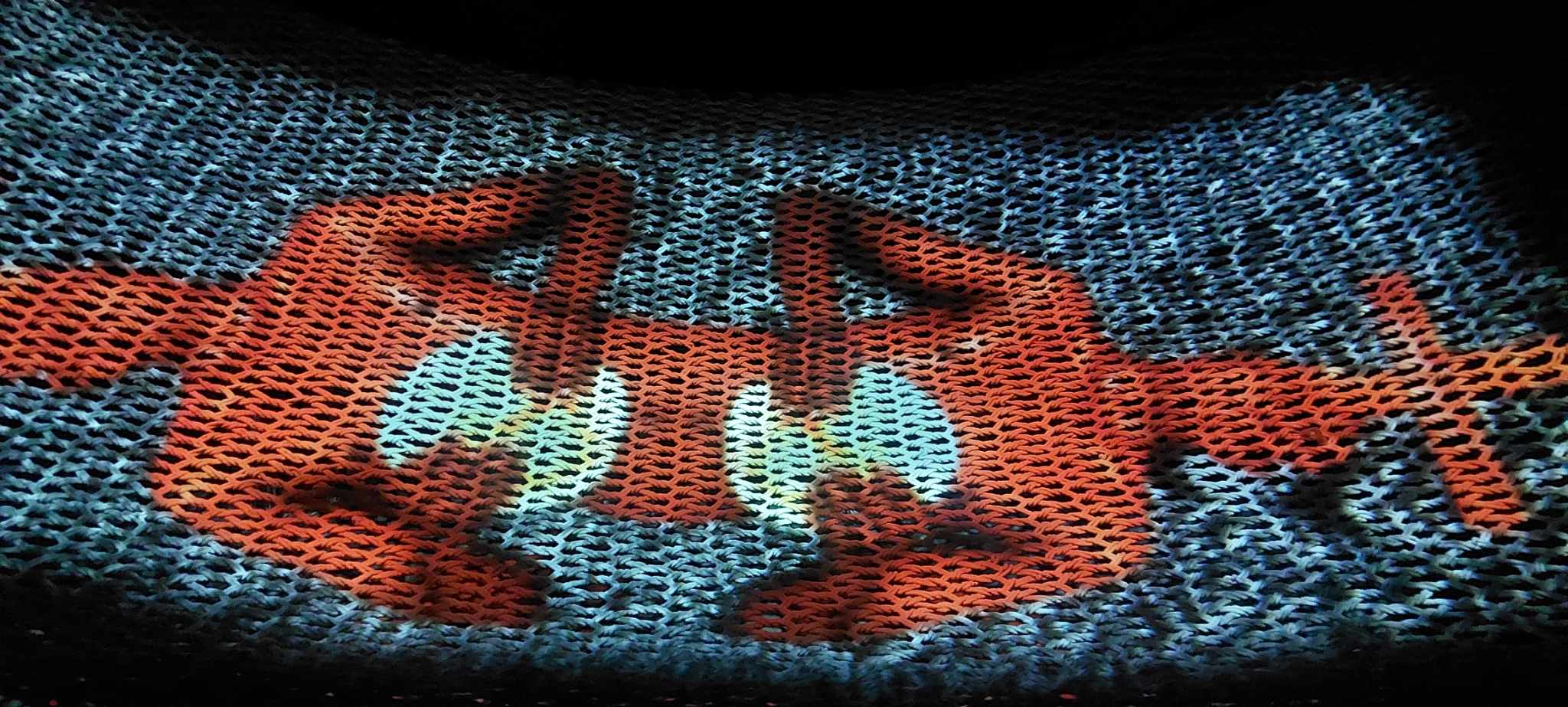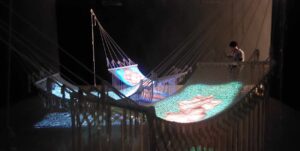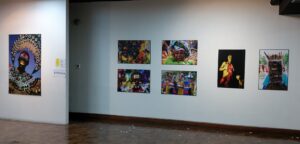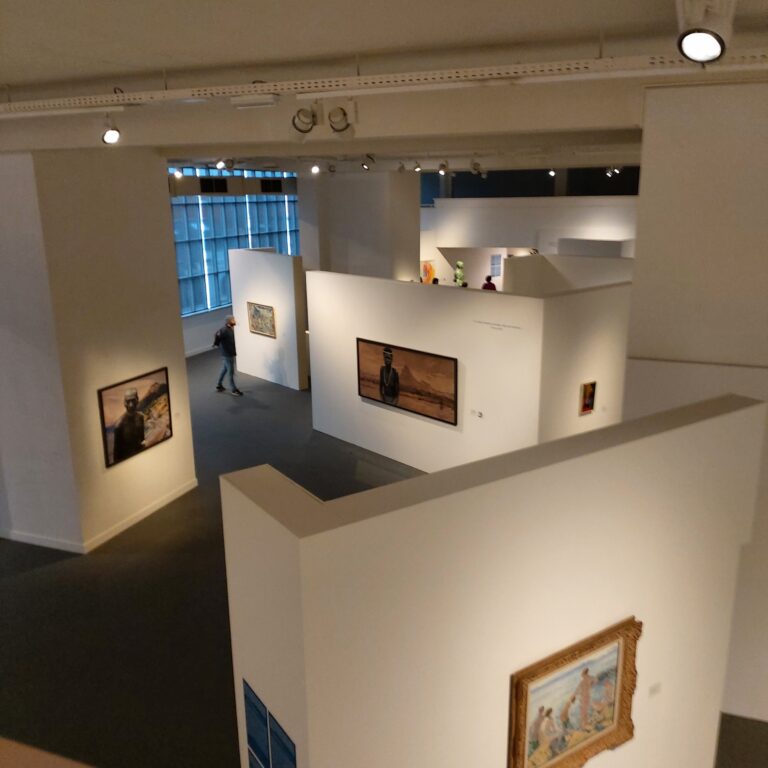The “Venue-ization” of the National Gallery of Jamaica?

Public art museums are expected to operate with a healthy degree of curatorial autonomy, whereby the professionals at the institution are allowed to make decisions about the institution’s exhibitions, collections, and programmes, without undue political or personal pressures and interference. Naturally, such institutions are expected to operate within their mandate, and guided by the relevant policy and legal frameworks. They are also expected to be accountable to the communities and stakeholders they serve, to be open to public consultation and dialogue on their exhibitions, programmes, and general direction, and to be firmly committed to inclusion and diversity. That could never mean, however, that the museum is up for grabs for external parties to have, or impose, exhibitions or programmes that may compromise institutional standards.

The basic governance principle at stake here is that a museum is an institution and not a venue. This means that museums ought not to be forced to support and accommodate external projects that are fueled by self-serving personal, commercial, or political agendas or that may not be relevant or otherwise appropriate. While productive collaborations are to be welcomed, external parties should not be able to dictate exhibitions and programmes, or “have exhibitions” at the place, as the museum is to be accountable for its curatorial and artistic standards, and its use of public funds and resources. Clear rules of engagement are necessary, such as duly communicated policies regarding external exhibition proposals and there ought never to be an obligation, on the part of the museum, to accept any such proposal. Such policies should be supported, not undermined, by the political directorate but that is, ironically, where the pressure often comes from to make exceptions.
As one who worked in various positions at the National Gallery of Jamaica (NGJ) between 1984 and 2018, with more than eight years as its Executive Director, I can affirm that the pressures for other parties to stage externally generated exhibitions at the NGJ is constant and at times enormous, typically coming from well-connected individuals (including artists), embassies, ministers, and even other government entities. My colleagues elsewhere in the Caribbean have similar tales to tell, with pressures that reflect a blatant disregard for the expected curatorial autonomy and standards of a public art museum. What is at stake in such instances is the museum’s powers of legitimization, which is a power that should be used judiciously and not to endorse problematic projects.
As is the case in most museums, the majority of the NGJ’s exhibitions have always been internally curated or curated by guest-curators contracted by the gallery. It has, however, also been recognized that including touring exhibitions can add substance and diversity to the exhibition programme. For most of its history, the NGJ has accepted external exhibitions selectively, providing they were professionally curated, of an appropriate standard, relevant to the NGJ’s mandate and programme direction, and offered on an institution-to-institution basis, as is the norm for public art museums. Such exhibitions also had to be fully funded, resulting in only minimal expenditure for the NGJ, as there was no budgetary provision for such exhibitions (and often no budgetary provision for exhibitions at all!). It was always made very clear, when such exhibitions were accepted, that the NGJ would have ultimate curatorial authority over its presentation (and would thus also be accountable in case of any controversies or challenges), although such projects of course involve collegial collaboration with other curators and institutions. As the late Chief Curator David Boxer used to insist, all exhibitions shown at the museum needed to be regarded as NGJ exhibitions.
Some memorable touring exhibitions came to the NGJ through diplomatic, and quasi-diplomatic channels such as the British Council and United States Citizenship and Immigration Services (USIS). This included a Jacob Lawrence print exhibition in the 1980s, which came to Jamaica through USIS, and the Aubrey Williams retrospective in the late 1990s, which originated at the Whitechapel Gallery in London and was toured in the Caribbean by the British Council. As a rule, private exhibition proposals were not entertained, but the NGJ’s policy on this subject was frequently challenged, which at times resulted in unpleasant situations whereby certain individuals used their formidable social and political capital to try to force the issue. There were also regular pressures from embassies to show diplomatic exhibitions that were not suitable for the NGJ. The NGJ, however, managed to hold a firm line on its very necessary policies.
It appears that in recent years, the NGJ has abandoned this hard-won position of principle. Last year, on a visit to the NGJ for a small panel discussion I happened upon the hasty mounting, in the mezzanine area, of an unannounced exhibition of carnival photography from the Dominican Republic, ambitiously titled The World Upside Down. I was told by members the curatorial staff that the exhibition had come through the Dominican Embassy and that the NGJ staff had been instructed to mount it, without specifying who had done the instructing.

I was shocked at the poor quality and production values of the photos and, particularly, that several of them featured figures in blackface, without any contextualization, which seemed unfortunate, given the Dominican Republic’s history of racist and xenophobic policies and actions towards neighboring Haiti. The exhibition, which was on view for just a few days and publicly acknowledged by the NGJ only after it had closed, was held along with a “Dominican Week” reception at the NGJ as well as a trade mission. While it may have been presented in a spirit of goodwill by the Dominican Embassy, it was an all-time low in the NGJ’s exhibition history and a serious blunder on the part of its leadership. Such an exhibition should never have been held at the NGJ.
As I stated at the time, we certainly need more Caribbean exchange exhibitions in Jamaica, but I believe that such initiatives are better handled on an institution-to-institution basis and supported by the respective embassies, rather than as direct diplomatic courtesies. My concern was about the quality and substance of the exhibition and the apparent lack of professional consultation with the NGJ curatorial staff, who did not seem to take any responsibility for the decision to stage it. Having such an exhibition at the NGJ, however, conveyed to the public that its leadership was entirely comfortable with its quality and content, and prepared to lend the NGJ’s name and facilities to the project.
I was surprised to learn, then, early this week that another Dominican exhibition was being staged at the NGJ, which was announced at very short notice on the Instagram account of the Dominican Embassy in Kingston and in which the NGJ was tagged. The flyer highlights the Embassy as the principal organizer, while the NGJ and the Ministry of Culture, Gender, Entertainment and Sport (MCGES) seem to appear as secondary partners, along with two other Dominican organizations. The exhibition, which again opened as part of Dominican Week and will be on view until May 7, consists of a multi-media installation project titled Overlapping by the Dominican artist and architect Raúl Morilla, an artist I did not know about previously. Perhaps there was a need for a more credible “do-over” after last year’s debacle, and this year’s exhibition indeed looks far more interesting and appropriate.
I am not sure how the showing at the NGJ of this year’s exhibition came about and whether there was more consultation with the curatorial staff this time around. It is instructive that there is no mention of the exhibition on the NGJ’s other social media accounts, and that it was not listed in the exhibition calendar the NGJ published recently. This suggests that this is an exhibition held at the NGJ by the Dominican Embassy which was furthermore scheduled at short notice. The question arises whether the NGJ will now be expected to host an annual Dominican diplomatic exhibition and what the broader implications are for the NGJ’s exhibition programme, going forward.
The two recent Dominican diplomatic exhibitions at the NGJ set a dangerous precedent. What moral authority does the NGJ now have to reject any diplomatic or private exhibition proposal, regardless of standards or relevance, lest it be accused of favouritism? And what degree of autonomy does the NGJ’s current curatorial staff still have to make professional decisions about such matters? And has the NGJ now finally become a venue, rather than an institution? If these issues are not handled more thoughtfully and with a greater sense of principle, the NGJ’s curatorial autonomy and standards will be eroded even further, although this is already a widely shared concern. It seems that the NGJ needs to engage in some serious reflection on its exhibition policies and communicate these clearly to the public and stakeholders, while being consistent, transparent, and unbiased with their application.
Dr Veerle Poupeye is an art historian specialized in art from the Caribbean. She works as an independent curator, writer, researcher, and cultural consultant. The second, revised and expanded edition of her best-known book “Caribbean Art” was recently published in the World of Art series of Thames and Hudson. Her personal blog can be found at veerlepoupeye.com.






